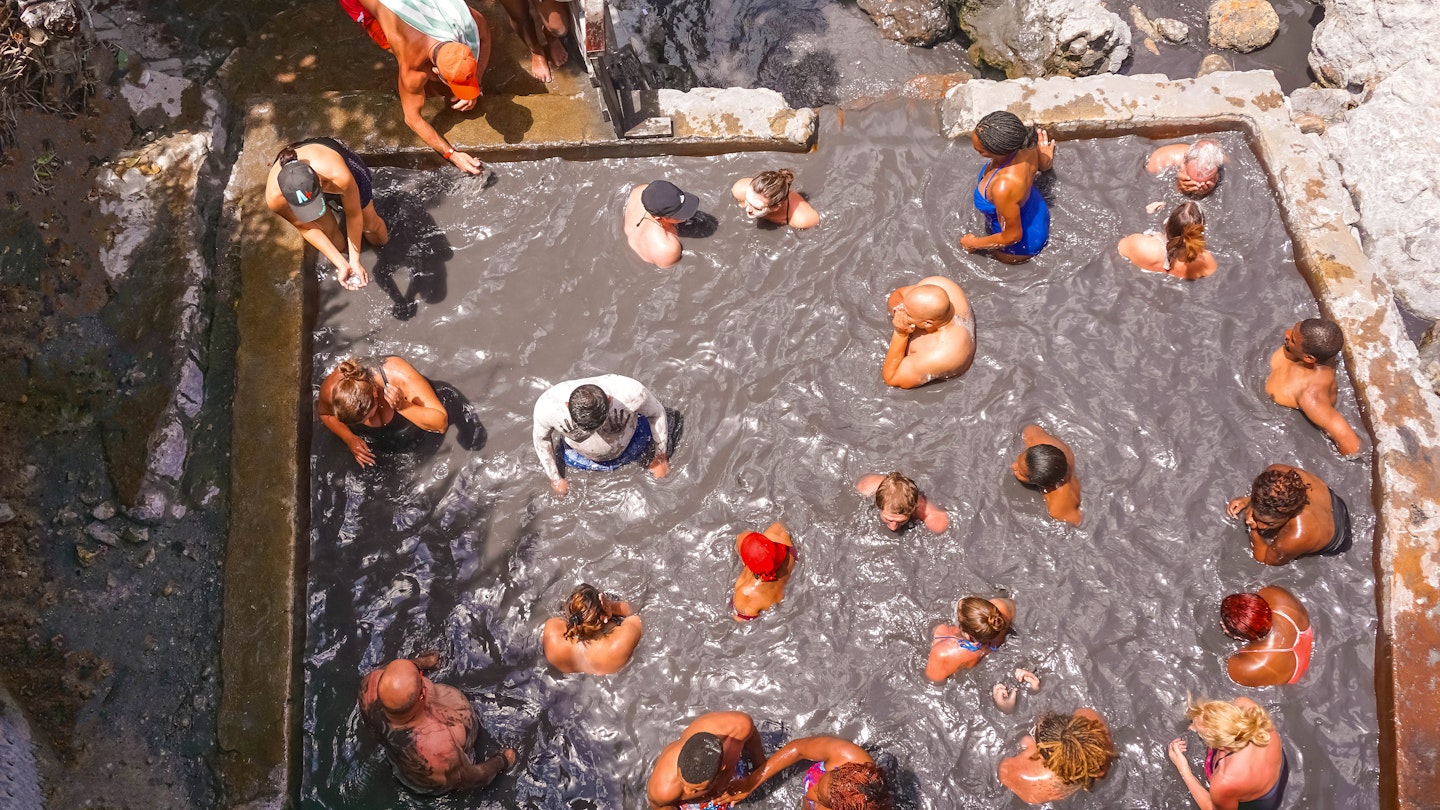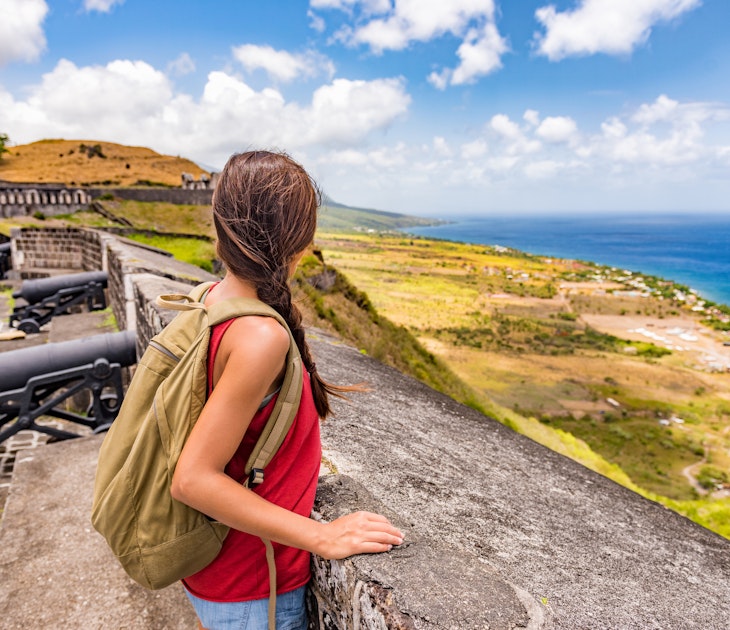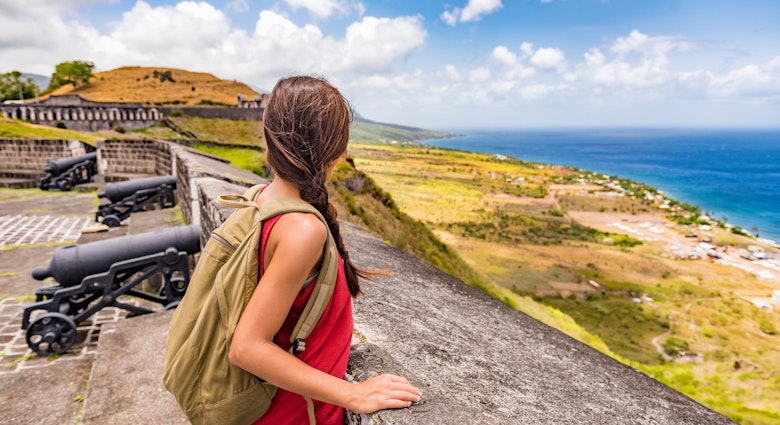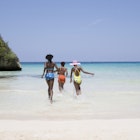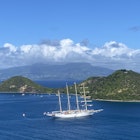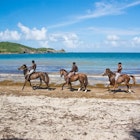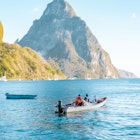The Caribbean is a favorite vacation destination for many travelers because of its gorgeous beaches, lively festivals and diverse geography. The region is home to thousands of islands and cays, with 13 independent countries and twice as many dependent territories for travelers to explore.
While a trip to a Caribbean island is sure to include palm trees and sandy beaches, each island stands out for unique reasons. Shaped by their multicultural history, numerous languages and exceptional cuisine, even neighboring islands have striking differences. Here are some of the most unforgettable experiences across this breathtaking archipelago.
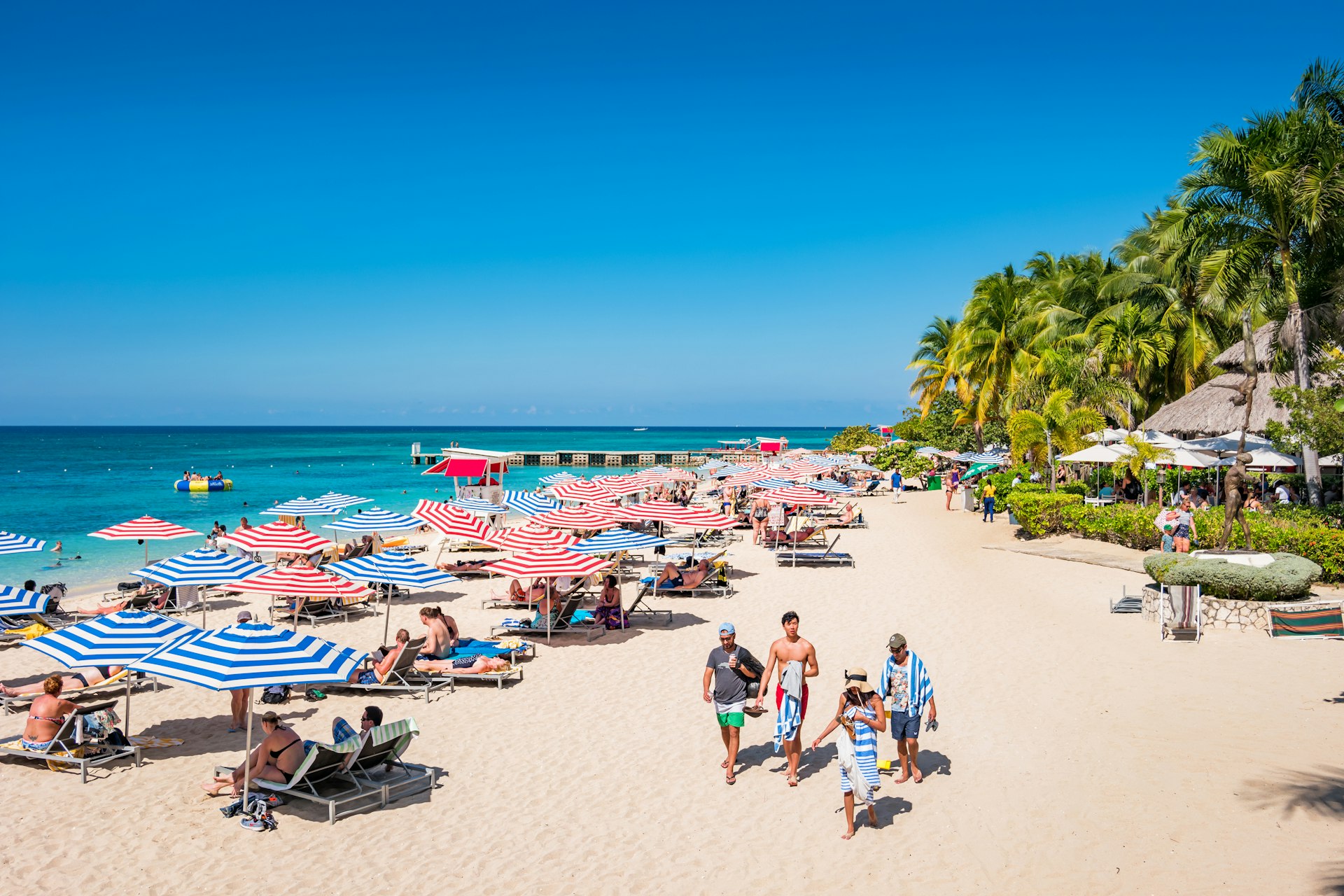
1. Jamaica
Best for history
Jamaica’s powerful impact on the world cannot be denied. The island has been a popular vacation destination for decades, and it’s the birthplace of reggae, jerk seasoning and Blue Mountain coffee, among many other things. The tiny island known for its blissful beaches also has many carefully preserved historic sites that tell the story of Jamaica’s history.
Montego Bay is Jamaica’s most popular destination with travelers, with major hotels and resorts dotted along the coast. Off the resorts, Montego Bay has several museums and historic sites for travelers to explore, such as the National Gallery of Jamaica, the oldest established museum in the English-speaking Caribbean. The gallery has a collection of contemporary and modern art as well as preserved artifacts from the Taino population, who were the first to inhabit the island.
Another stop travelers should consider is the Greenwood Great House, a former plantation dating back to the late 1700s with an extensive collection of antiques, library books and musical instruments from Jamaica’s colonial era. Visitors should also take an afternoon to tour the Appleton Estate, a rum distillery that dates back to 1749. A tour includes a short film on the distillery's history, a walk through the sugar cane fields and a stop in the tasting room to sip on the flavorful aged rum.
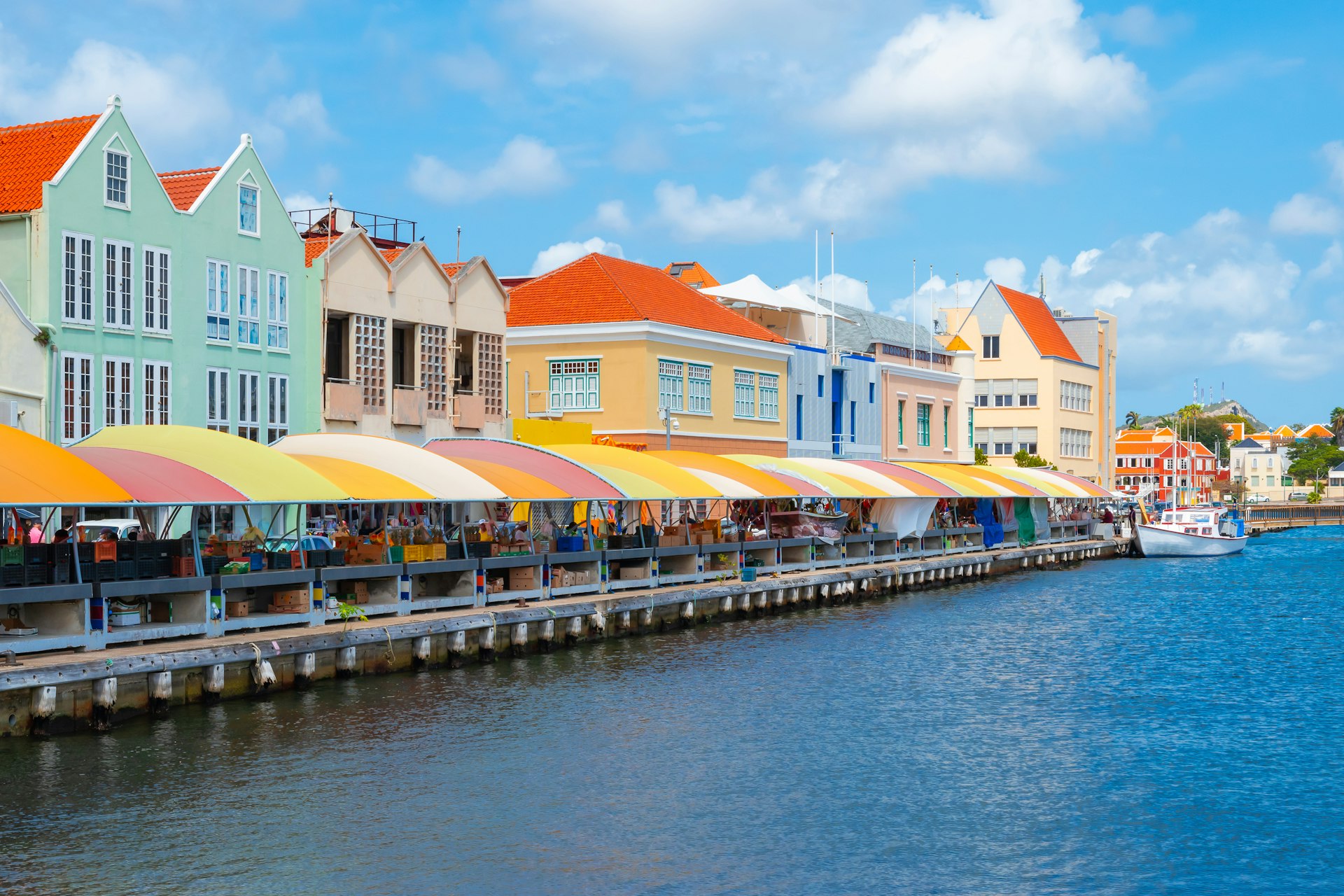
2. Curaçao
Best for culture
Curaçao is the largest of the three islands that make up the ABC Islands (Aruba, Bonaire and Curaçao), a family of Dutch islands in the Southern Caribbean. While every island has its own distinct culture, Curaçao stands out because of its diverse population, unique terrain and global cuisine.
Curaçao’s population comprises 40 to 50 nationalities, and most residents speak at least four languages: Dutch, English, Spanish and Papiamento – a local Creole language that’s a mix of Dutch, Portuguese and Spanish. Curaçao’s geography is unique as well. The island has beautiful beaches, a desert landscape that can be explored by quad bike, and a fascinating cave system on the island's southern tip.
Willemstad, Curaçao’s downtown capital, is full of bright Dutch colonial homes, vibrant street art, and fantastic museums. Curaçao’s cultural diversity is also evident in its global dishes. From fried fish at Plasa Bieu’s casual food hall-style diner to roadside goat burgers at Williburger, Dutch poffertjes at The Pancake Sensation, and Italian housemade pasta at Serafina – the island is a true melting pot of cultures.
Planning Tip: Curaçao is generally outside the hurricane zone, which makes it an ideal destination to visit in the fall months.
3. Turks and Caicos
Best for beaches
While the award for the best beach is nearly impossible in an area made up of hundreds of islands, Turks and Caicos has some of the most sought-after beaches in the Caribbean. The string of islands is located about 575 miles southwest of Miami and experiences an average of 350 days of sunshine, so nearly every day is a beach day. There are over 100 islands and cays in Turks and Caicos, many of which are uninhabited – but with some planning, you can visit several beaches on your trip.
Travelers should start with the famous Grace Bay in Providenciales, which is also the location of most of the island’s hotels and resorts. Considered one of the top beaches in the Caribbean because of its dazzling turquoise water, expansive shoreline and soft, white sand, you could spend your whole vacation here. Other popular beaches in Providenciales are Bight Beach, less than 10 minutes south of Grace Bay, and Leeward Beach, a less crowded beach area five minutes north of Grace Bay.
To access some of Turks and Caicos’ more secluded beaches, you’ll have to travel by water taxi, boat charter or a day trip arranged by a hotel. Head to Middle Caicos for a day trip to the tranquil Bambarra Beach – also the name of the island's rum, which was named for the group of African settlers who first arrived in Middle Caicos in the 19th century. Or travel by ferry to North Caicos to Whitby Beach or Hollywood Beach, where you’ll likely have the entire beach to yourself.
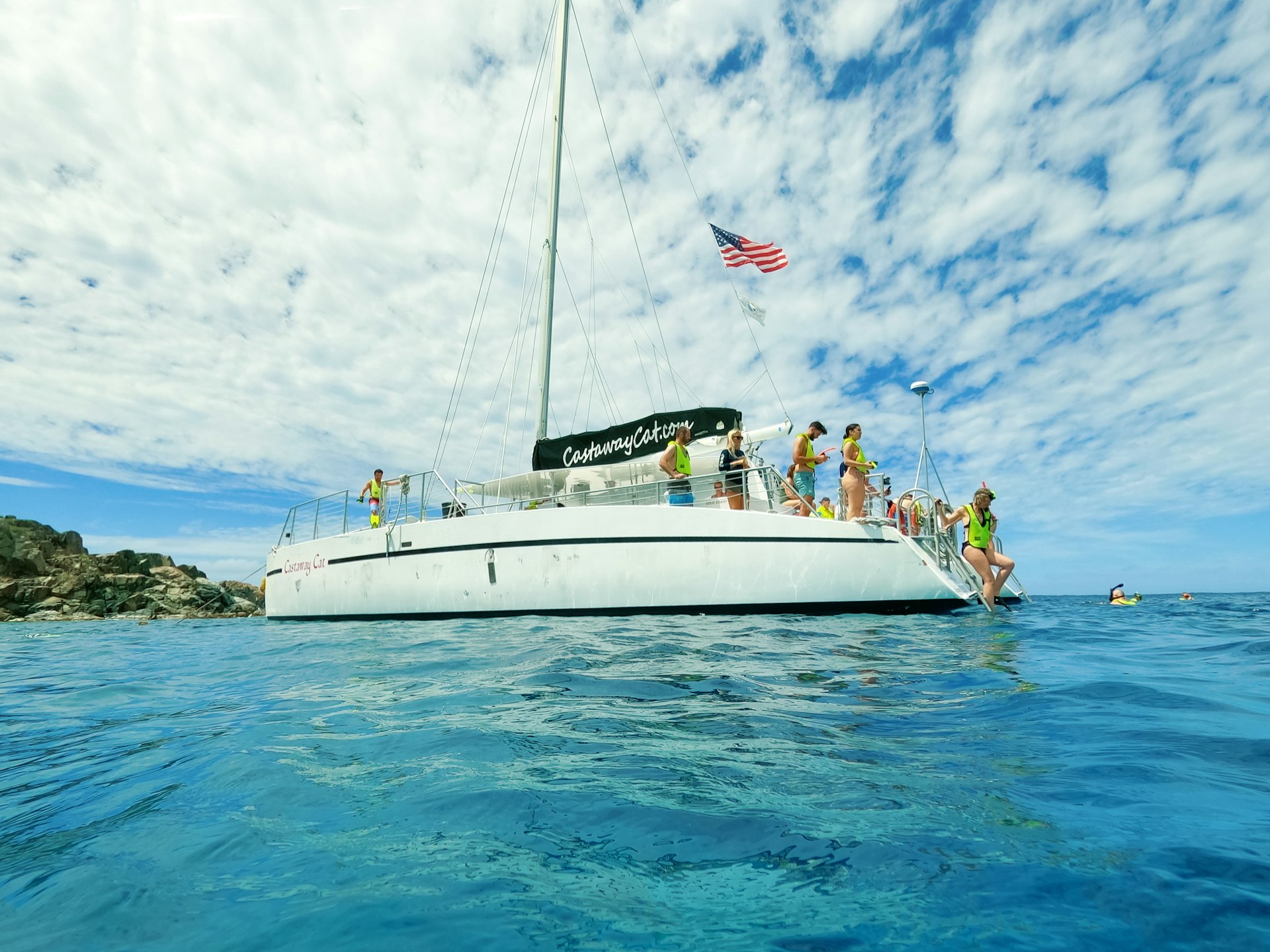
4. St John
Best for snorkeling
St John is part of the US Virgin Islands, which also include the islands of St Thomas and St Croix. The smallest of the three, St John, is accessible by ferry from St Thomas, and about two-thirds of the nearly 20 square mile island is a designated national park. St John also has some of the clearest, warmest waters in the Caribbean and vibrant marine life, which makes it an ideal spot for snorkeling.
St John’s excellent snorkeling spots include Trunk Bay, which is also the home of an underwater snorkeling trail. Visitors can follow the 400ft underwater trail that includes signs about the reef and the native plants and animals that inhabit the area. Other great spots include Maho Bay, where snorkelers regularly spot sea turtles, and Honeymoon Beach, where tropical fish and coral are abundant.
Planning Tip: St John does not have an airport. Most travelers fly into the Cyril E. King Airport in St Thomas and then take a ferry to St John.
5. Cayman Islands
Best for Food
The Cayman Islands consists of three main islands – Cayman Brac, Grand Cayman and Little Cayman – but most travelers head to Grand Cayman, the most developed of the three islands, where they flock to Grand Cayman’s Seven Mile Beach for its calm, crystalline water. Additionally, the island is a fantastic food destination.
The Cayman Islands has an eclectic culinary scene and exciting food festivals year-round. Food hotspots include fine seafood dining at Blue by Eric Ripert, conch fritters and ceviche at Tillie’s, sushi at Woto and kangaroo sausage at Australian diner Tukka. A visit to Grand Cayman should also include a taste of turtle, the national dish of the Cayman Islands, which can be found in versions of savory soups, burgers or steaks. Food festivals are another great way to experience Cayman’s cuisine.
October marks Restaurant Month and Cocktail Week with restaurant specials around the island, and January’s Cookout Festival brings chefs and wine and spirits experts from around the world.
Planning Tip: The Cayman Islands uses the Caymanian dollar, with CI$1 equal to US$1.25. Though US dollars are widely accepted, expect higher prices here than on other Caribbean islands.
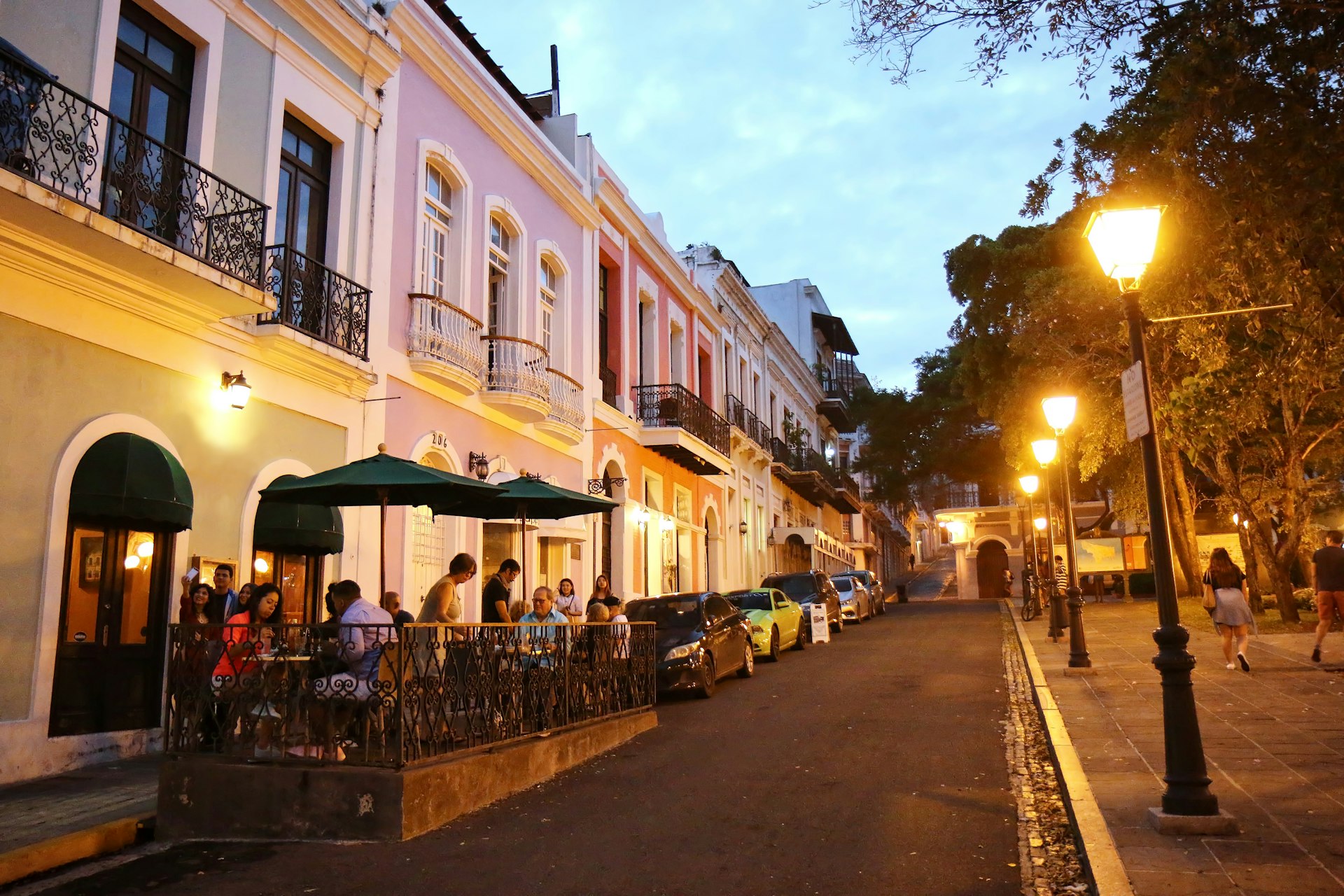
6. Puerto Rico
Best for nightlife
Some Caribbean islands are best for laying out on the beach, and while you can certainly do that in Puerto Rico, the nightlife in the capital, San Juan, shouldn’t be missed. During the day, Old San Juan invites travelers to stroll down cobblestone streets, check out museums and tour the Spanish forts El Morro and San Cristóbal. And at night, the city has a number of excellent bars and entertainment venues.
Visitors should start with La Factoria, one of San Juan’s most popular bars, which is actually a labyrinth of six different bars – each with its own drink menu and vibe. Other great bars include Jungle Bird, a tiny tiki bar with great drinks, and El Batey, a classic dive bar. The Mezzanine offers classic cocktails like Patria Libre (rum over coconut water ice cubes) with a second-story view of Old San Juan. Travelers should also head to La Placita de Santurce, a marketplace by day that turns into a lively outdoor block party when the sun goes down.
Planning Tip: Two restaurants have claimed to be the birthplace of the piña colada – The Caribe Hilton Hotel and the restaurant, Barrachina. If you have time, check out both locations and enjoy the island’s smooth signature drink made with coconut cream, pineapple juice and rum.
7. Barbados
Best for festivals
Barbados is the birthplace of rum (Mount Gay Distillery has been producing rum for nearly 300 years), so it’s understandable why the tiny island is also big on festivals and island-wide celebrations. While Barbados has no shortage of great beaches – there are over 80 to choose from – some of Barbados’ best activities are on land.
One of the island’s most popular events is Crop Over, which historically marked the end of the sugar cane season. The event dates back to 1780 and takes place at the end of July. The festival features concerts, arts and crafts, and the grand finale, The Grand Kadooment, a carnival that takes over the streets of Bridgetown with revelers in colorful costumes, mile-high speakers with booming music, and food and drinks.
In November, the island also puts on a world-class Food and Rum Festival with local and top chefs around the world participating. October marks the Barbados Jazz Excursion, a weekend filled with concerts and a benefit golf tournament.
Planning Tip: If you plan on playing mas (short for masquerade) by joining one of the masquerade bands for Crop Over, plan early. The colorful costumes are custom-made months in advance, and popular bands sell out quickly.
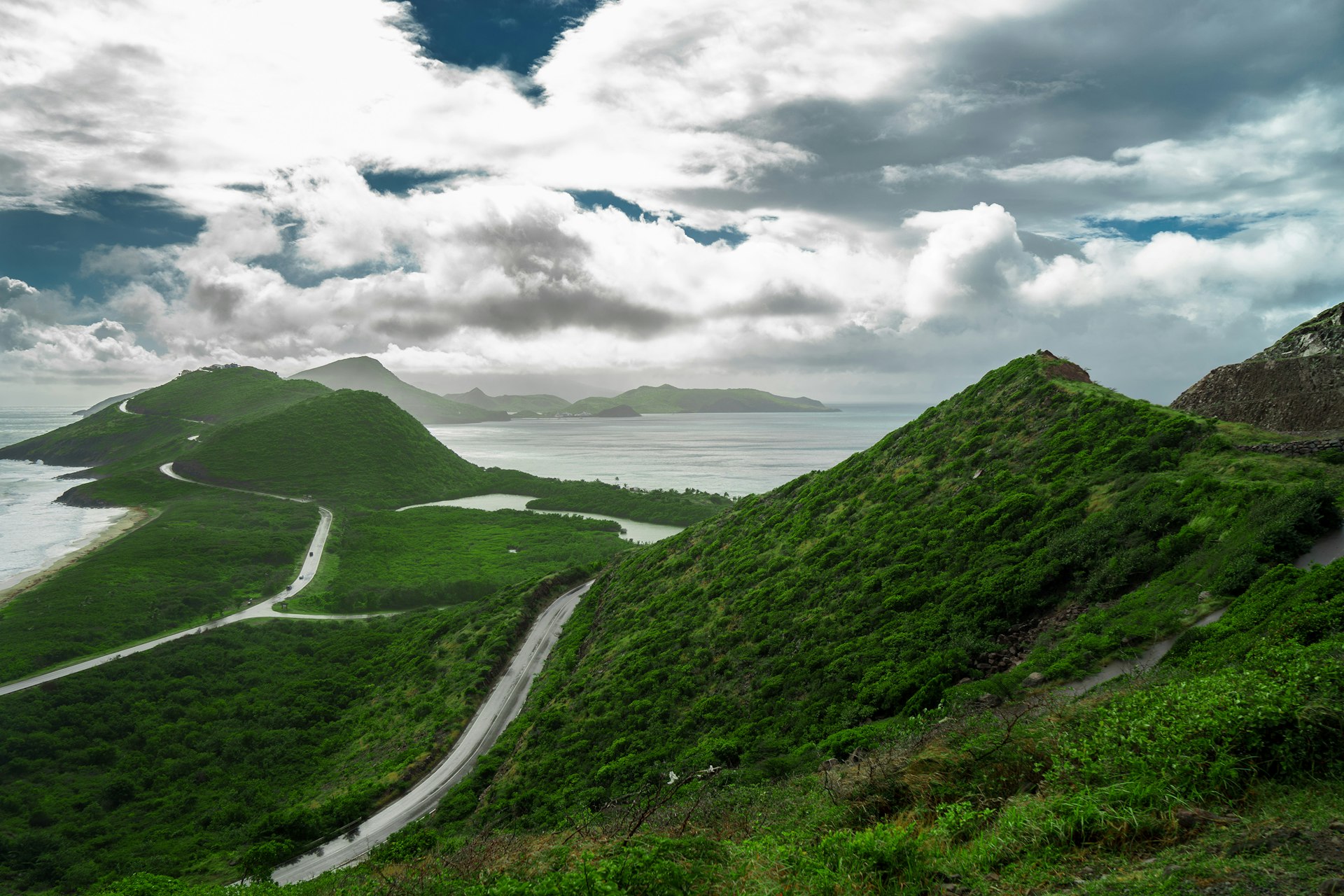
8. St Kitts
Best for adventure
St Kitts is a lush, mountainous island formed by volcanic activity that will appeal to adventure travelers. The island has its share of white sand and rich black sand beaches – the result of volcanic rock deposits. For a high-altitude adventure, visitors can hike Mt Liamuiga, a dormant volcano on the island's western end. At nearly 3800ft, it’s one of the highest peaks in the Caribbean.
St Kitts also has an extensive network of trails and caves that will take hikers past waterfalls, craters and the island's native verdant monkeys. Travelers can also step back in time with a ride on the St Kitts Scenic Railway. Originally built to transport sugar across the island, the three-hour ride gives passengers a scenic, 30-mile tour of the island. Other ways to traverse the island include a dune buggy or quad bike tour that will take riders past Old Road Town, the first English settlement in the Caribbean, and Brimstone Hill, the UNESCO Heritage fortress. Thrill seekers can also zip line over the rainforest or go horseback riding on beaches or mountain trails.
Planning Tip: The best view in St Kitts is atop Timothy Hill, located about 4 miles from the capital city of Basseterre, where you can see both the Atlantic Ocean and the Caribbean Sea and neighboring Nevis.
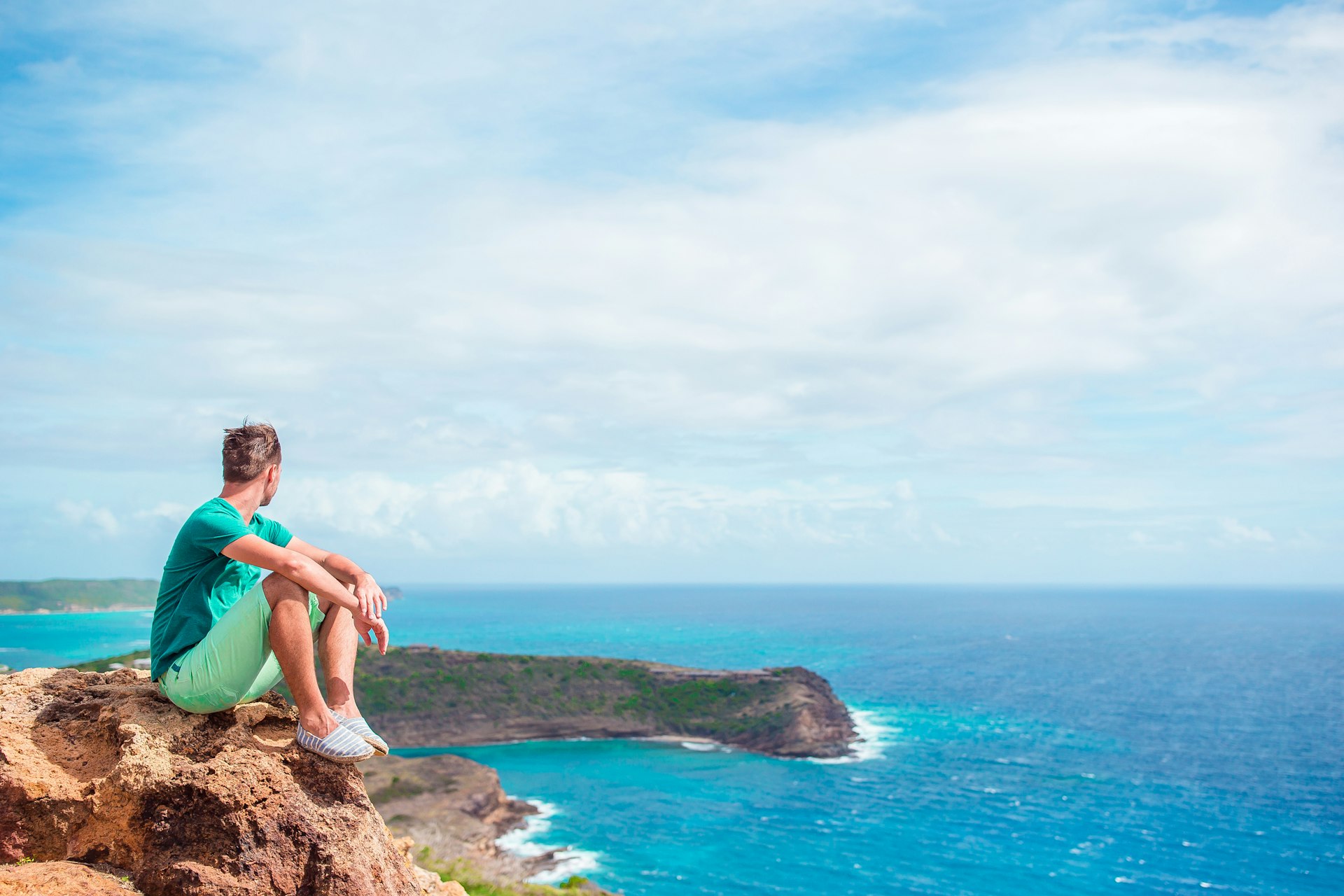
9. Antigua
Best for hiking
Antigua’s claim to fame is its 365 beaches – one for every day of the year. But those who venture beyond the beaches will be rewarded with several great hiking excursions. Between Antigua and its sister island Barbuda, there are over 65 named mountains and hills, many of which make excellent hiking trails.
Antigua’s most well-known mountain is Mt Obama, formerly named Boggy Peak. This peak is the highest elevation on the island, extending 1319ft into the air. Those who make it to the top are privy to panoramic views of Antigua and neighboring Montserrat. Mt Obama is considered an intermediate trail, and the three-hour round-trip hike can be strenuous, especially on a hot day.
More low-key hikes around Antigua can be found by heading to Nelson’s Dockyard National Park and following the trails that lead past landmarks like Pigeon Point Beach and historic attractions like The Blockhouse, a former British military fort. Hikers can also work up a sweat on the Pillar of Hercules hike, which starts at the end of Galleon Beach and leads hikers to a majestic limestone formation.
10. St Lucia
Best for nature
St Lucia is one of the most geographically stunning islands in the Caribbean. The Pitons, the twin volcanic peaks, are its most recognizable landmark, and the island also has tons of other natural attractions. For first-timers, the Pitons are a must-explore destination, and travelers can explore the natural wonders by a boat ride, snorkeling the surrounding waters or hiking to the top of Gros Piton – the larger (but more navigable) of the two peaks.
At St Lucia’s Sulfur Springs, located in the historic town of Soufrière, travelers can take a mud bath and then rinse off in the steaming springs. St Lucia’s interior rainforest is also fantastic for exploring. The Edmund Forest Reserve is an 18,000 sq ft park ideal for spotting the St Lucian parrots and orioles native to the island.
The island also abounds with waterfalls. While there are several impressive cascades, Sault Falls (also known as Dennery Falls or Errard Falls) is an off-the-beaten-track 50ft waterfall with a swimming hole that’s best explored with an experienced guide.

